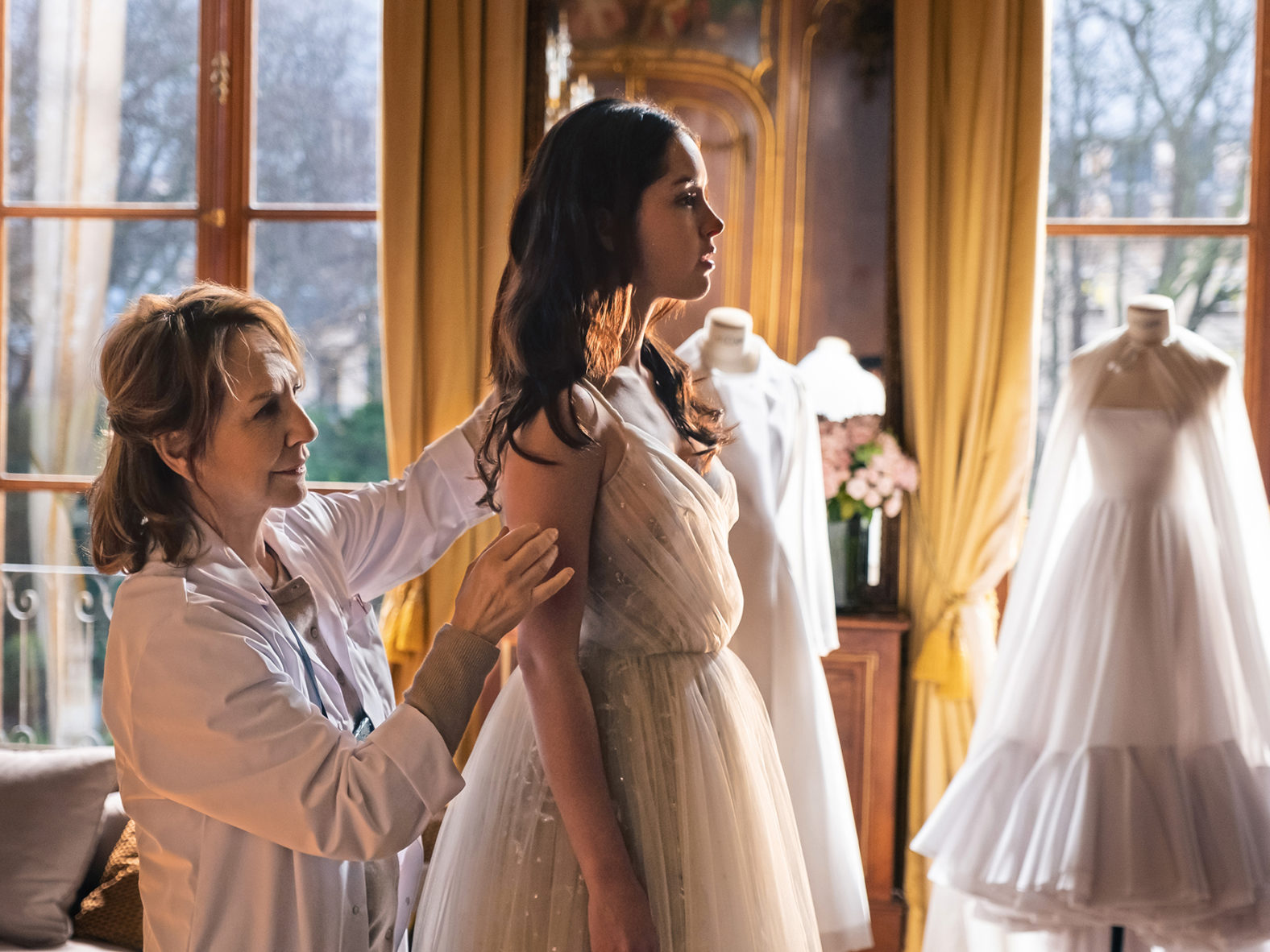From writer-director Sylvie Ohayon, Haute Couture takes us into the world of high fashion and behind the gilded curtain, shining a spotlight on the industry’s unsung heroes: its dressmakers. Starring Nathalie Baye as Esther and Lyna Khoudri as Jade, Ohayon delivers a story about breaking beyond your limitations to realise your greatest potential.
Esther, the head seamstress at Dior’s Avenue Montaigne workshop, is about to take her last bow. Despite devoting her life to the fashion house, resulting in the fracturing of her relationship with her daughter, Esther is being ‘retired’. Facing a blank schedule for the first time in her adult life, Esther prepares to curate her final collection of haute couture pieces. With her retirement mere weeks away, Esther’s life is altered when she is robbed in the metro by Jade and her friend Souad.
Jade, a young woman living in an Arab ‘ghetto’ in Saint-Denis with her mentally ill mother, is disarmingly pretty with a barbed tongue that more than matches Esther’s own salty disposition. At the insistence of her friends, Jade decides to return Esther’s belongings and Esther’s curiosity in the young thief results in her offering Jade a position as an intern in her atelier.
Set mostly within the Dior workshop, Esther’s home and Jade’s apartment building, Ohayon draws distinct lines between the worlds of her leading women. Jade’s apartment in Saint-Denis is worn, cluttered, and feels dark due to her mother’s crippling depression. Esther’s home is a modest, middle-class double storey with crisp white interiors and a garden where she talks lovingly to her roses. And then, where their unique worlds collide, is the atelier.
The Dior workshop features a mostly Baroque inspired design; as Ohayon says, “I wanted gilding, mouldings, a ‘Versaille’ in my studio”. The crisp white of the walls in the workroom, no doubt a homage to Dior’s actual clinically white workspaces, are gorgeously contrasted with gold accents and neoclassical art, and rooms of rich mahogany with plush sofas and heritage Dior dresses on display. The space is worlds away from where Jade comes from, and she spends much of her time there fighting against everyone and everything.
Despite her initial misgivings, Jade finds an interest in dressmaking and shows an eagerness to learn from Esther and the other seamstresses in the workshop, but this newfound career drive is at odds with her best friend Souad, who thinks the pair are better off staying in the ghetto and living off government benefits to avoid being forced into ‘slave labour’. As Esther explains, the salary they receive for their work is not important, what’s important is the ‘beauty of the gesture’, the effort that they put into each garment and the resulting art that effort creates, that taking pride in your craft allows you to take pride in yourself.
Estranged from both her mother in childhood and her daughter in adulthood, Esther sees much of herself in Jade and uses her as a surrogate for these relationships. Jade, whose relationship with her own mother is that of patient and carer, is reluctant to give in to Esther’s version of mothering, but eventually finds her new mentor to be supportive and fulfilling in a way that she had never experienced before. Both extremely outspoken, Jade and Esther spend as much of the film bickering and throwing verbal jabs at each other as they do bonding, and Baye and Khoudri are excellent opposite each other. Seeing Khoudri’s shy smile as Baye complains about being scolded for ordering a third dessert, or the subtle look of pride as Baye hands Khoudri her own tool pouch and work coat, helps to soften all their harsh moments and ultimately showing that their relationship is a rich and loving one.
Ohayon’s approach to her film is extremely delicate and beautifully balanced. Purposely steering away from the pomp and circumstances of runway shows and boutiques, Haute Couture really allows the background players of the fashion industry to shine in ways previously unseen. As the director and storyteller, Ohayon gives her audience only small bites of sentimentality, contrasting those moments with extremely caustic dialogue that keeps the pace quick and sharp, preventing the film from becoming overly sweet. Her characters are extremely grounded and real, reflecting the true divides in class, culture and age still present today.
Elegant and as lovingly crafted as one of their dresses, Haute Couture is a lesson and reminder that the heart of every fashion house lives in its workshops.
